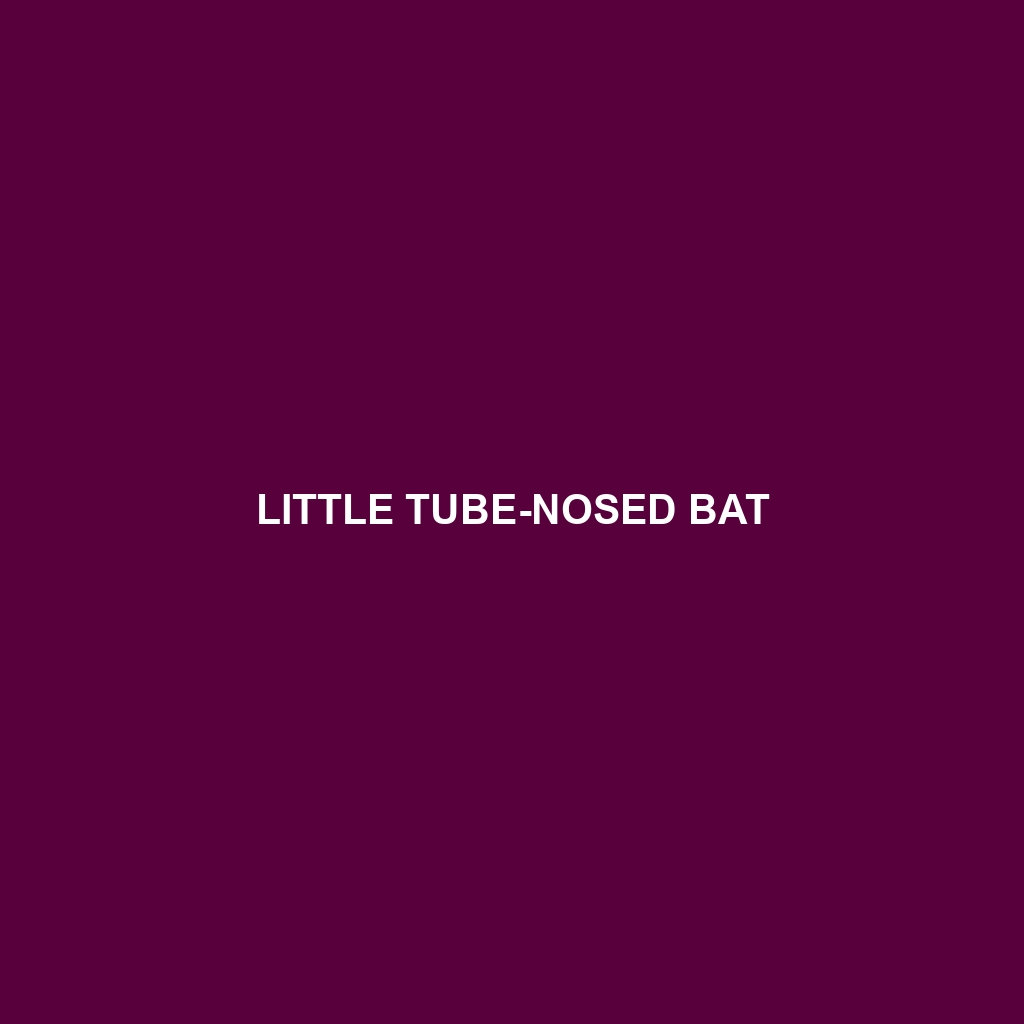Little Tube-nosed Bat ()
Common Name: Little Tube-nosed Bat
Scientific Name:
Habitat
The Little Tube-nosed Bat is primarily found in tropical and subtropical forests of Southeast Asia, particularly in countries such as Indonesia, Malaysia, and the Philippines. These bats prefer humid environments and often inhabit areas near water sources, which provide ample foraging opportunities. They can also be found in secondary forests and sometimes in caves.
Physical Characteristics
Measuring approximately 8 to 10 centimeters in length, the Little Tube-nosed Bat is characterized by its distinctive tubular nostrils that extend outward, aiding in its remarkable echolocation abilities. The fur is typically dark brown to black on the dorsal side and lighter on the ventral side, providing camouflage against the forest canopy. Its small wings allow for agile flying, making it adept at navigating through dense foliage.
Behavior
Little Tube-nosed Bats are nocturnal creatures, primarily foraging at dusk and dawn. They often roost in large colonies in tree hollows or under leaves, which provide both protection and thermal regulation. These bats exhibit social behavior, utilizing complex vocalizations to communicate within the colony. Their ability to navigate through dense woods is a remarkable adaptation that allows them to locate both mates and resources efficiently.
Diet
The diet of the Little Tube-nosed Bat consists mainly of insects, particularly moths and beetles, which they capture in flight using their echolocation skills. These bats play a critical role in controlling insect populations, thereby contributing significantly to their ecosystem. Their feeding habits are particularly focused on areas abundant in insect activity, often near water bodies where insects congregate.
Reproduction
Little Tube-nosed Bats engage in a breeding season that typically occurs during the wet season, when food sources are plentiful. Females usually give birth to one pup per season, which remains dependent on the mother for several weeks. Notable behaviors during this period include communal care of young, as female bats often help each other in nurturing pups within the colony.
Conservation Status
The Little Tube-nosed Bat is currently classified as vulnerable due to habitat loss and fragmentation stemming from deforestation and urbanization. Conservation efforts are necessary to protect their natural habitats and ensure viable populations for the future.
Interesting Facts
One fascinating aspect of the Little Tube-nosed Bat is its unique hunting strategy. These bats can detect sound frequencies that are inaudible to other species, allowing them to locate and capture prey with astonishing precision. Additionally, they exhibit a high level of social interaction within their colonies, making them an interesting subject for behavioral studies.
Role in Ecosystem
Little Tube-nosed Bats play a vital role in maintaining the health of their ecosystem. As pollinators and pest controllers, they contribute to the ecological balance by regulating insect populations and facilitating the reproduction of various plant species. Their interactions with other species highlight the interconnectedness of the forest ecosystem.
